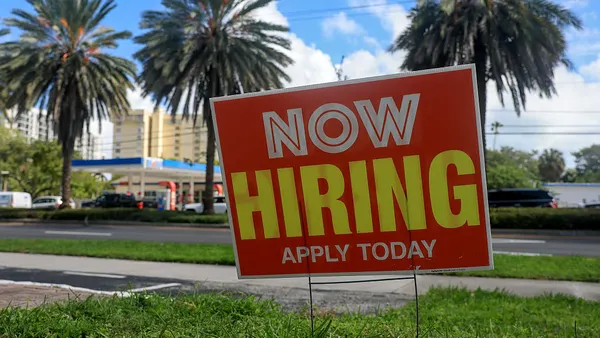Dive Brief:
- Forty percent of people 55 and older are working or actively looking for work, but there could be room for them in growing industries, according to data from the Department of Labor's Bureau of Labor Statistics (BLS). According to BLS, many occupations projected to be average- to fast-growing between 2016 and 2026 have workforces comprised of at least one-third older workers.
- The top five occupations BLS found with projected growth and significant percentages of older workers in 2018 included: real estate appraisers and assessors with 39% older workers and 14% growth projected; technical writers (45%, 11%); tax preparers (38%, 11%); property, real estate and community association managers (39%, 10%) and construction and building inspectors (39%, 10%).
- Salaries for these occupations range from $28,960 to $71,850, BLS said. The data excludes self-employed people, who make up a significant portion of these occupations.
Dive Insight:
Many people remain in the workforce well beyond age 55, either because they aren't ready to stop working or are financially unable to retire. In fact, one-third of respondents in a recent survey said they expect financial hardship in retirement. Employers can perhaps expect to receive applications and resumes from more older workers, as they actively keep looking for work.
Despite state and federal employment protections for workers age 40 and older under the Age Discrimination in Employment Act (ADEA), age bias persists. While employers need to replace retiring workers, they'll need to avoid excluding older workers from their recruitment — either blatantly or implicitly through biased language on application materials — or risk violating the ADEA. Talent pros might also consider how hiring and retaining older workers with a wealth of knowledge in their field could help organizations overcome certain skills gaps.
"In many workplaces, negative myths and attitudes underlay the age bias. Our society tends to view older workers as out-of-touch, lacking in current skills, and unable to learn new skills. But, research over the past decade has debunked most of these myths," wrote Marie Cini, president of the Council for Adult and Experiential Learning, in an opinion piece for HR Dive.
Correction: An earlier version of this story misstated the BLS data for workers over 55. According to the agency, about 40% of workers age 55 and older were either working or actively looking for work. HR Dive has updated the story and headline and regrets the error.









